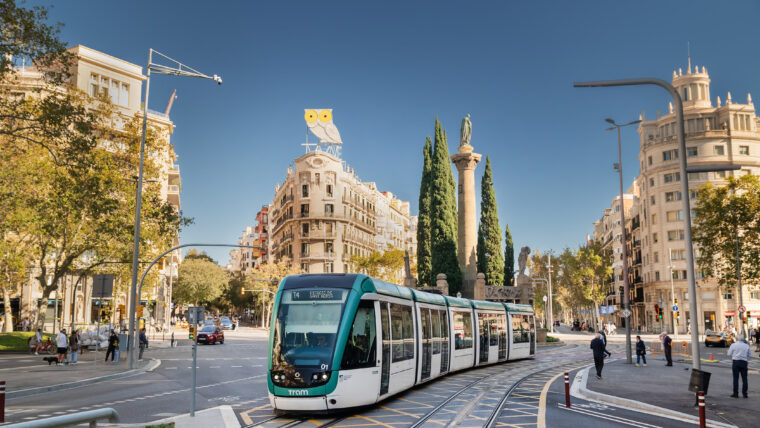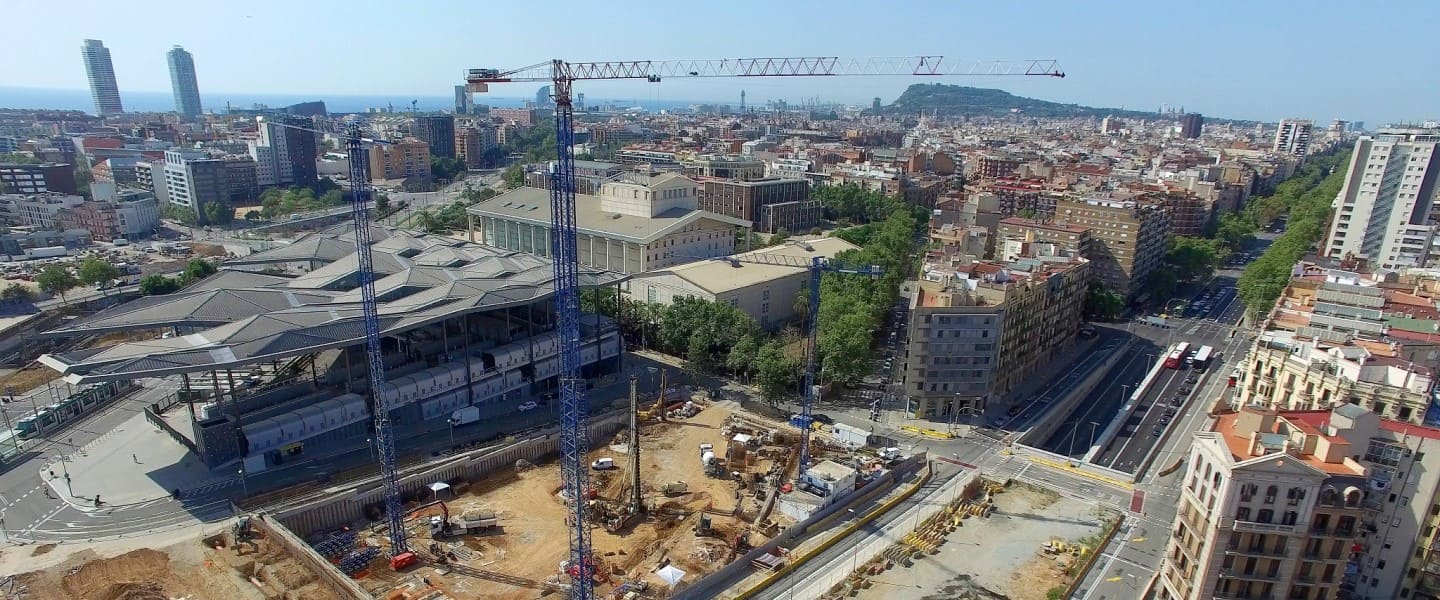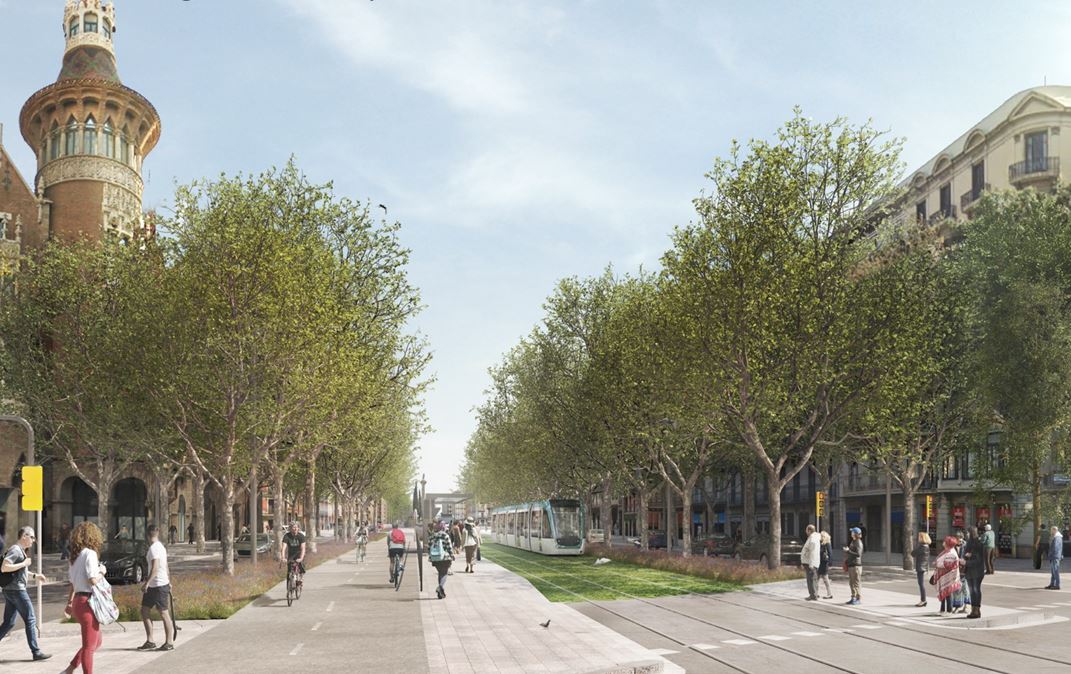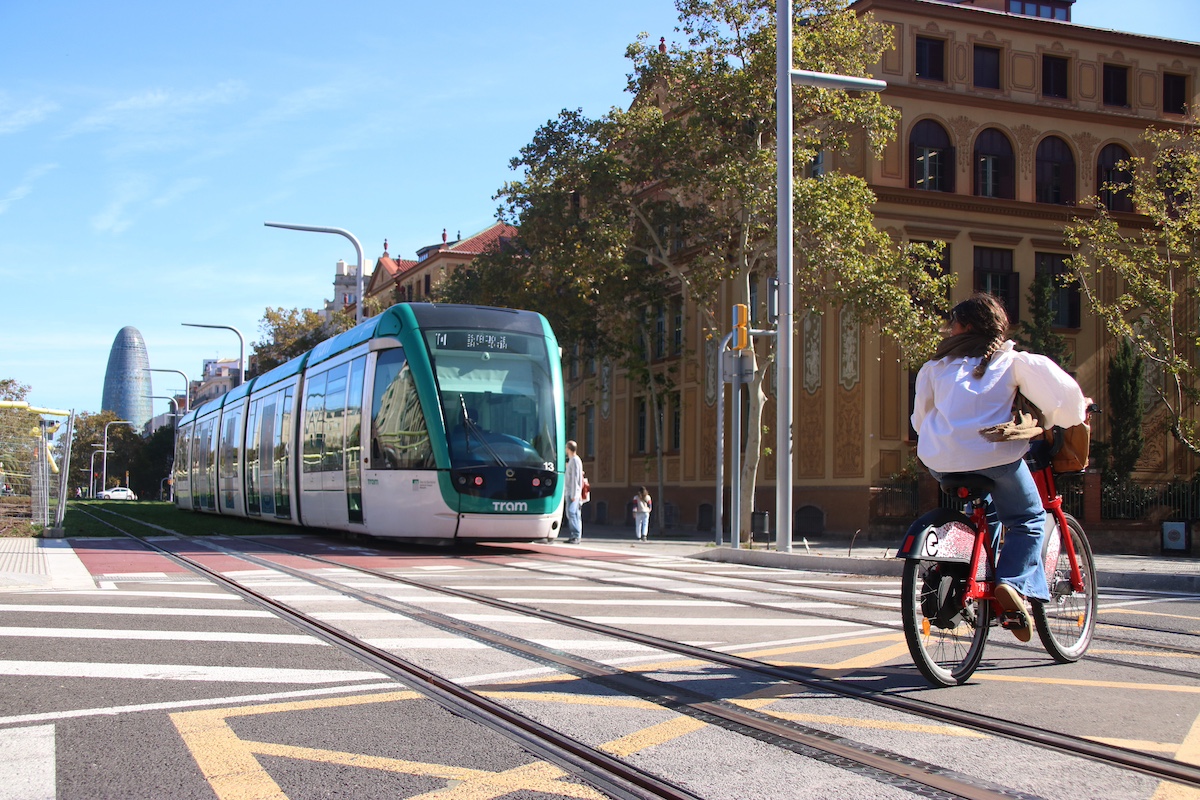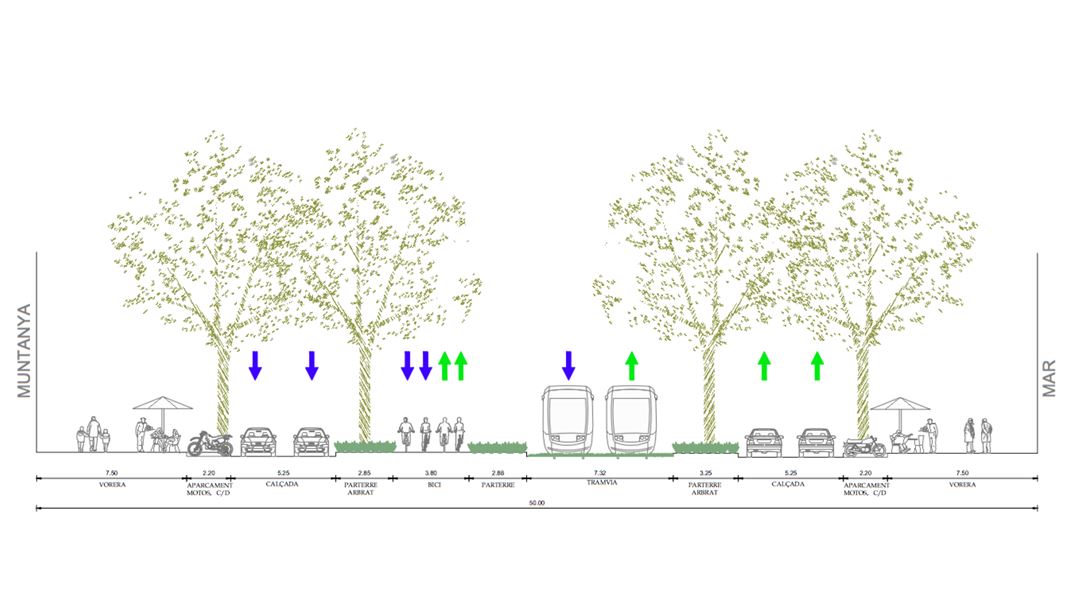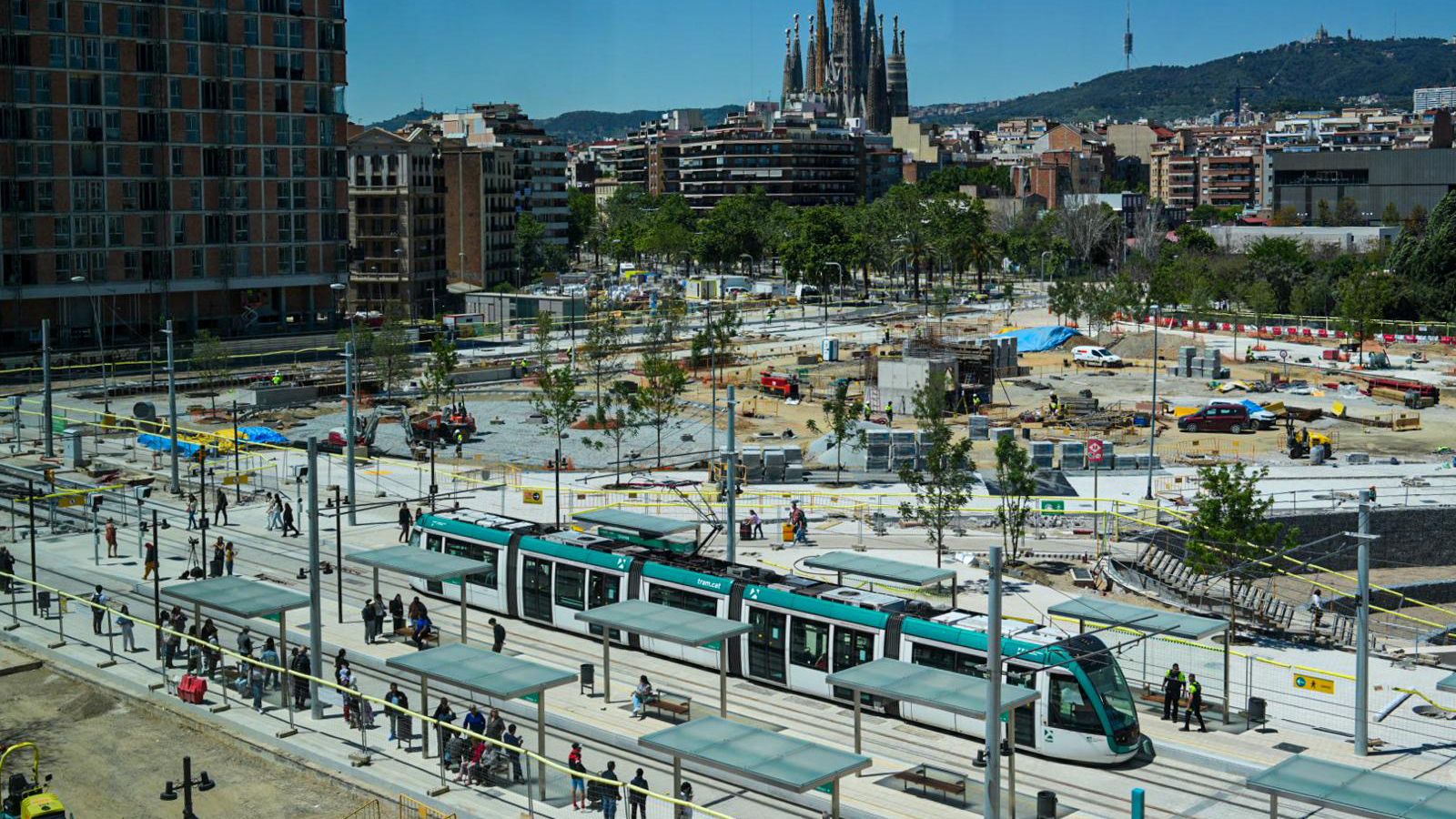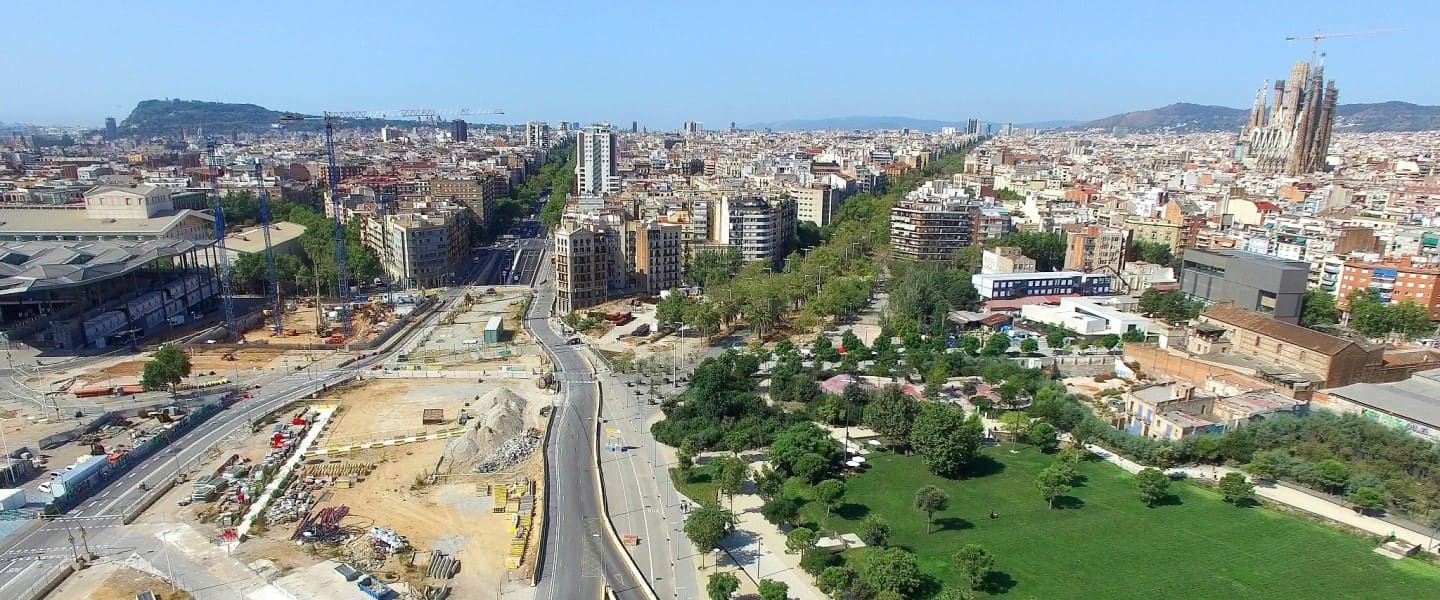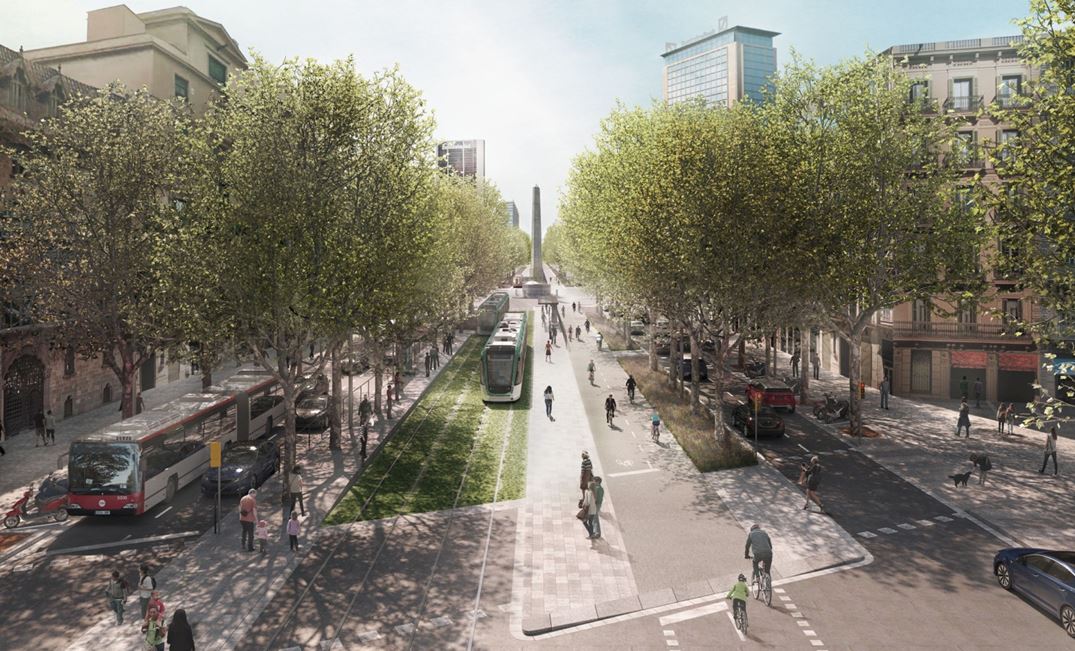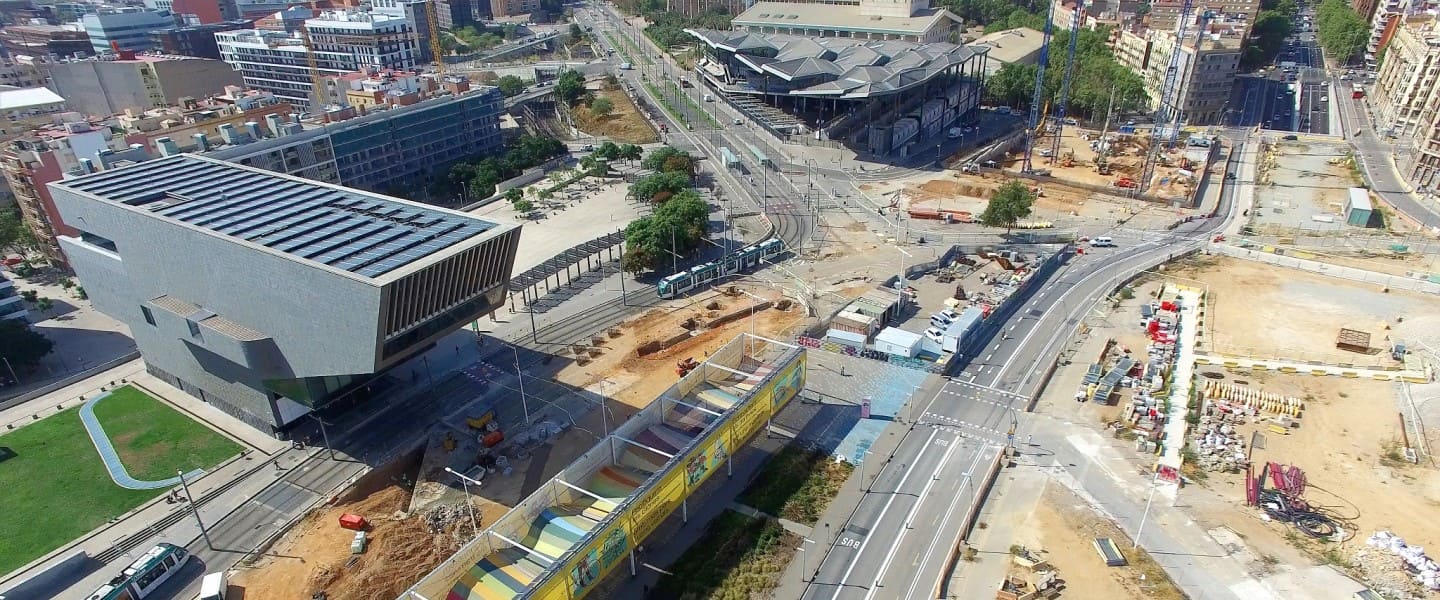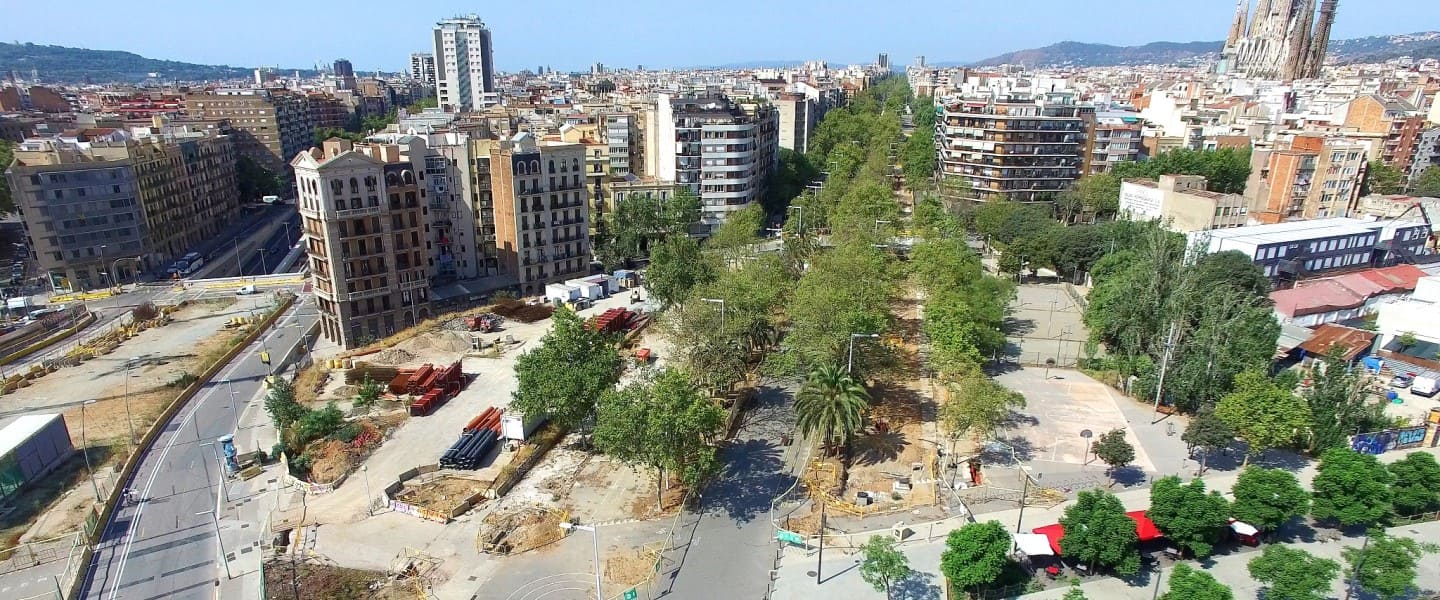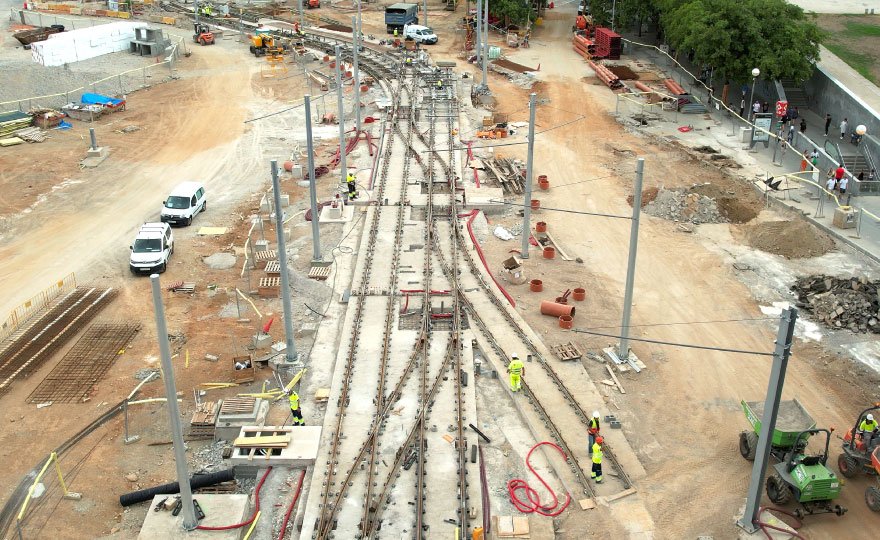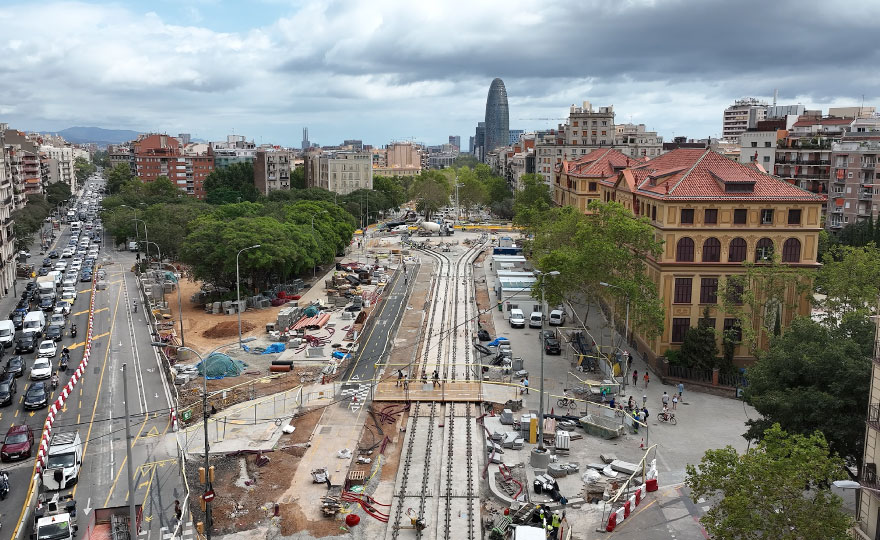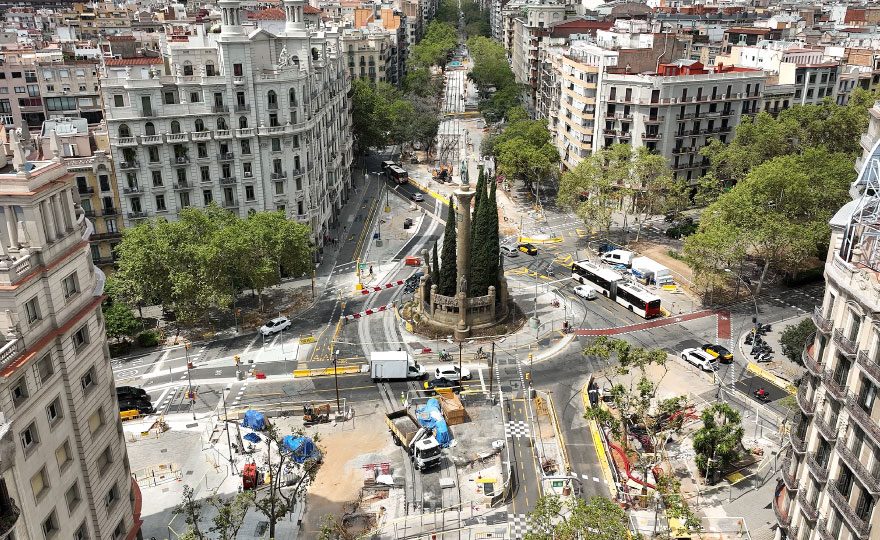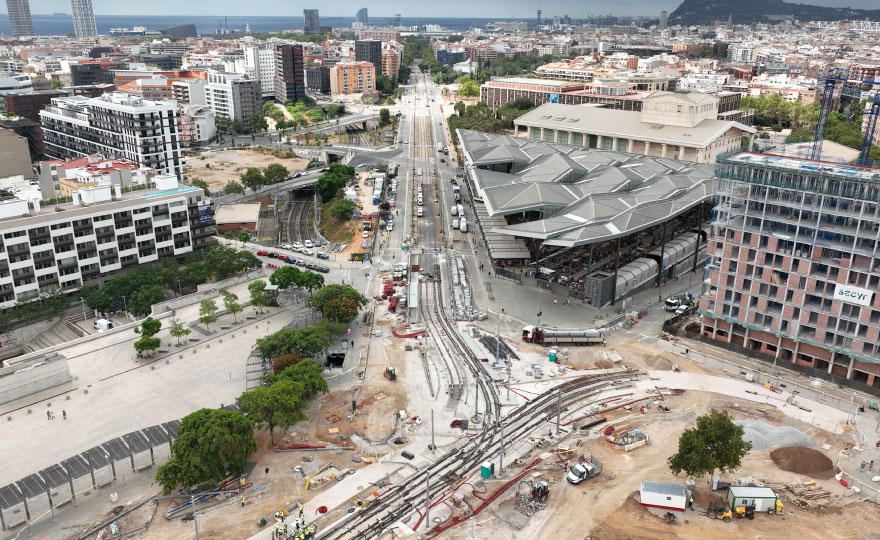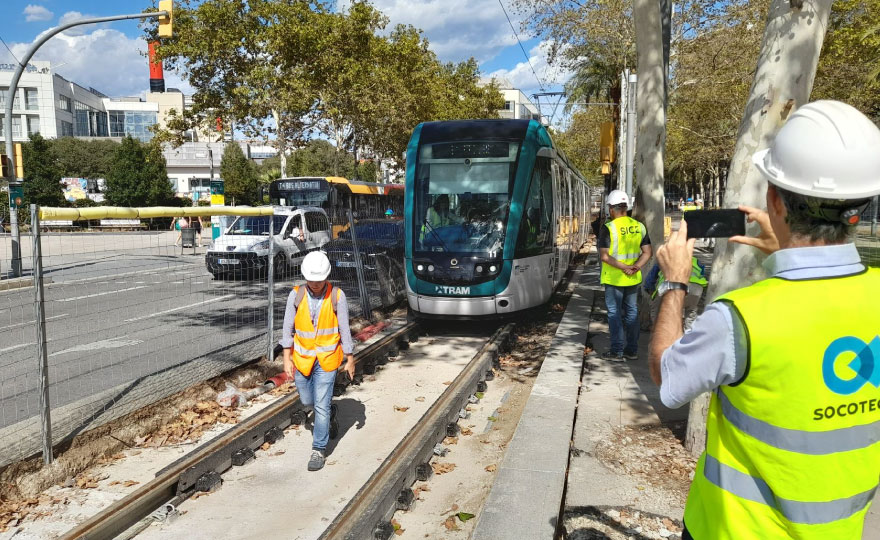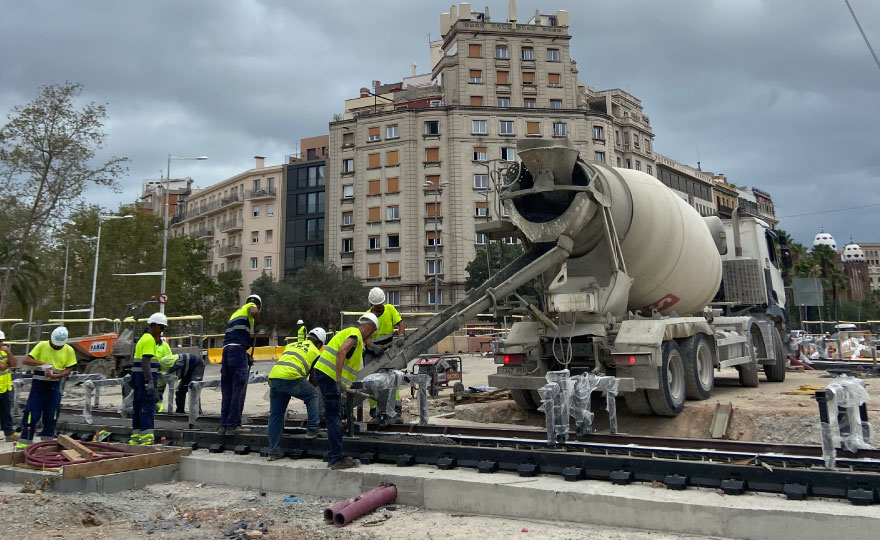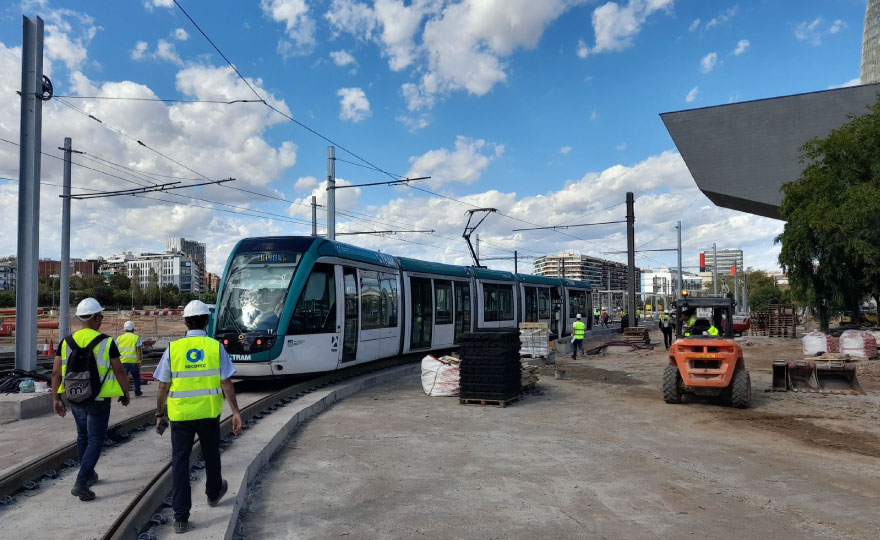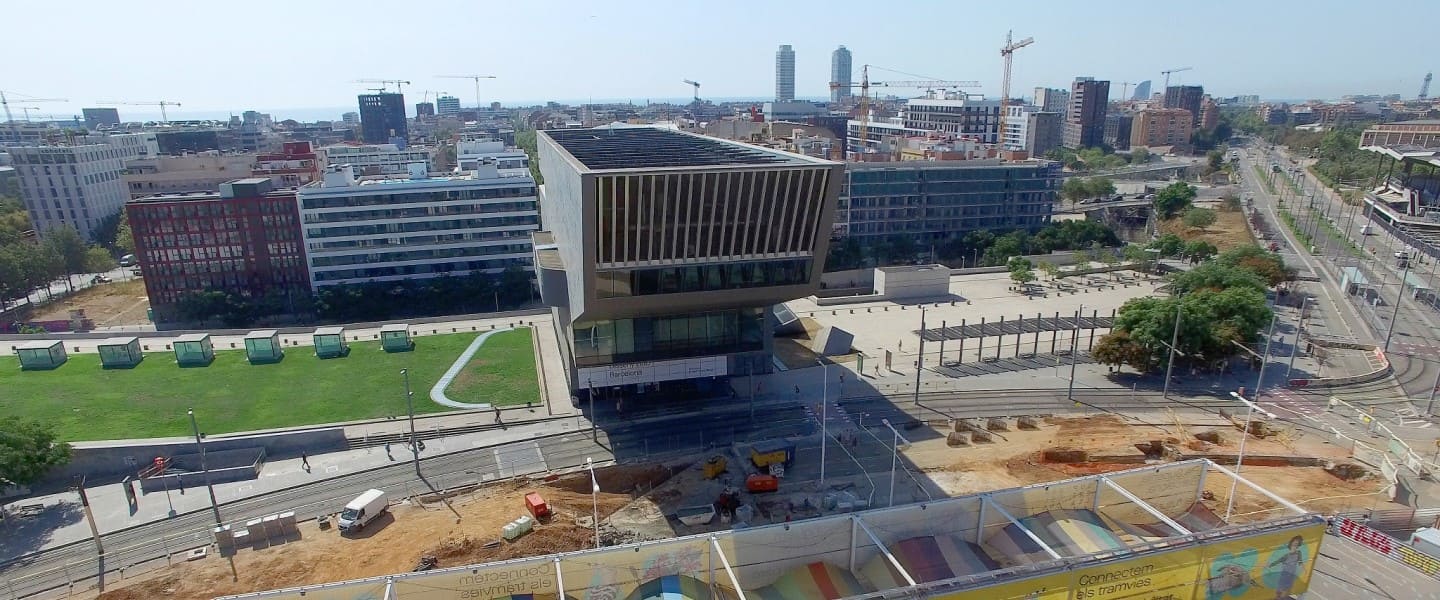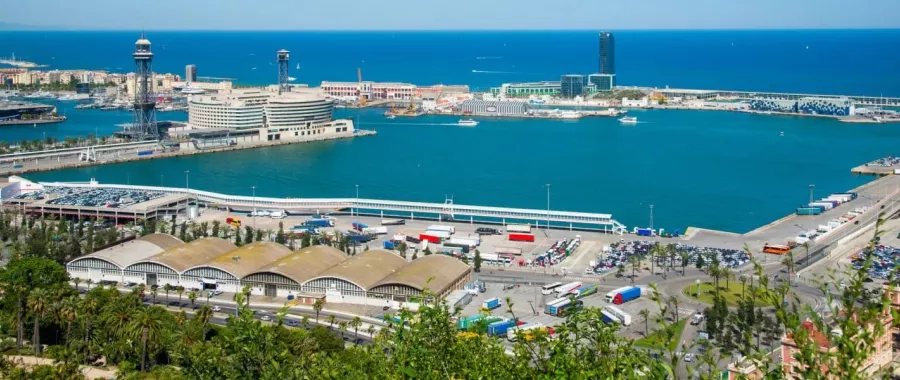The Diagonal Tram Connection: Urban Planning and Mobility in a Unique Work that Will Link Barcelona from End to End
Información general
- Fecha (año): 2022 – en curso
- Cliente: BIMSA y ATM
- Ubicación: Barcelona - España
- Propiedad fotografía: ©SOCOTEC Spain
SOCOTEC, with its recognized expertise in construction management for mobility infrastructure projects in Barcelona, participates in the connection of the Trambaix and Trambesòs tram networks through the Diagonal. This unique urban planning and mobility engineering project is carried out in two phases and aims to improve public transport connectivity in the city.
Currently, the tram network has two independent sub-networks: the Trambaix (which runs through 7 municipalities in Baix Llobregat and Barcelonès) and the Trambesòs (which runs through 3 municipalities in Barcelonès). The total length is 29.2 km with 56 stops. Demand has tripled since 2004 and is growing at faster rates than the rest of the Metropolitan Public Transport System. The most used stops are the interchanges of Glòries, Maria Cristina, Cornellà Centre, Can Rigal, Sant Adrià and Francesc Macià.

Talk to our experts

OBJECTIVES
Construction management of the Diagonal tram connection
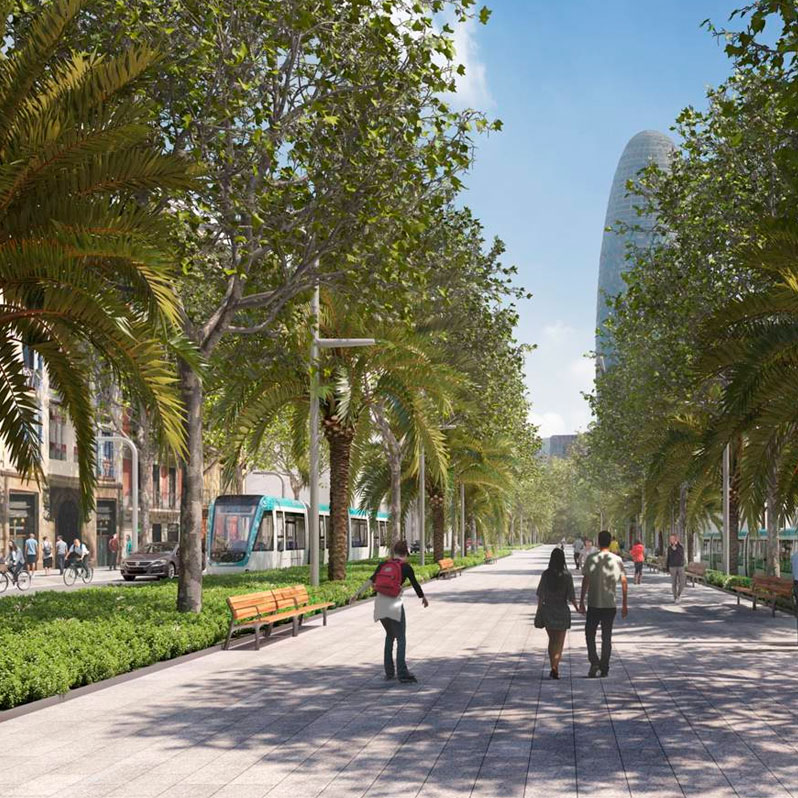
Expansion of the tram to achieve a sustainable mobility model that contributes to a healthier urban model. The tram connection will increase the demand for the use of the tram itself and other modes of public transport and cycling.
Solve an interrupted system and facilitate relations between 9 municipalities in the metropolitan area, improving public transport accessibility for the inhabitants of Barcelonès Norte and Baix Llobregat to the nerve centre of the city of Barcelona. Connecting the tram network is a great opportunity to facilitate travel between the 9 metropolitan municipalities served by the tram.
Expansion of the tram to achieve a sustainable mobility model that contributes to a healthier urban model. The tram connection will increase the demand for the use of the tram itself and other modes of public transport and cycling.
Solve an interrupted system and facilitate relations between 9 municipalities in the metropolitan area, improving public transport accessibility for the inhabitants of Barcelonès Norte and Baix Llobregat to the nerve centre of the city of Barcelona. Connecting the tram network is a great opportunity to facilitate travel between the 9 metropolitan municipalities served by the tram.
Project Description
The construction management of the tram connection through the Diagonal connects the Trambaix networks, located to the north of Barcelona, and the Trambesòs, to the south. This work involves linking Plaça de Glòries with the end of the Diagonal. The first phase, currently underway, connects Plaça de Glòries with Passeig de San Juan, including stops in Monumental, Sicilia and Verdaguer. Once in service, this section will allow the journey to be completed in approximately 7 minutes.
The project, which is scheduled to open at the end of the year, includes the T4 line, which will run from Verdaguer to Sant Adrià, while the T5 and T6 lines will maintain their current routes.
Types of Routes
There are two types of pathways in this project:
- From Passeig de San Juan to Glòries: Tracks in a double section with double carriageways, coinciding with the Rodalies tunnel on line 2, which connects the Estación de Francia with Aragón. Due to the presence of the tunnel, it is not possible to double the tracks in this section.
- Marina Area: Dual road with a sea section and a mountain section, and a central road with a side bike lane.
Urbanization and Singular Points
- Cartagena Street: It becomes pedestrian to allow the tram to turn towards Diagonal.
- Electrical substation on Nápoles Street: A large-scale work.
- Impact on services: Diversion of a 1-meter diameter pressurized drinking water pipe, with protective screens.
- Glòries: Extension of the metro hall for direct access to the lower level of the design museum.
Engineering for Mobility: Catenary-Free Energy and Traction
The tram is powered by the APS system, an Alstom technology that uses a third central rail to supply power safely and efficiently. This system has been tested in cities such as Rio de Janeiro and Bordeaux, and SOCOTEC is a pioneer in its integration in Barcelona.

INTERMODAL CONNECTION
How is the Knot of Glòries resolved?
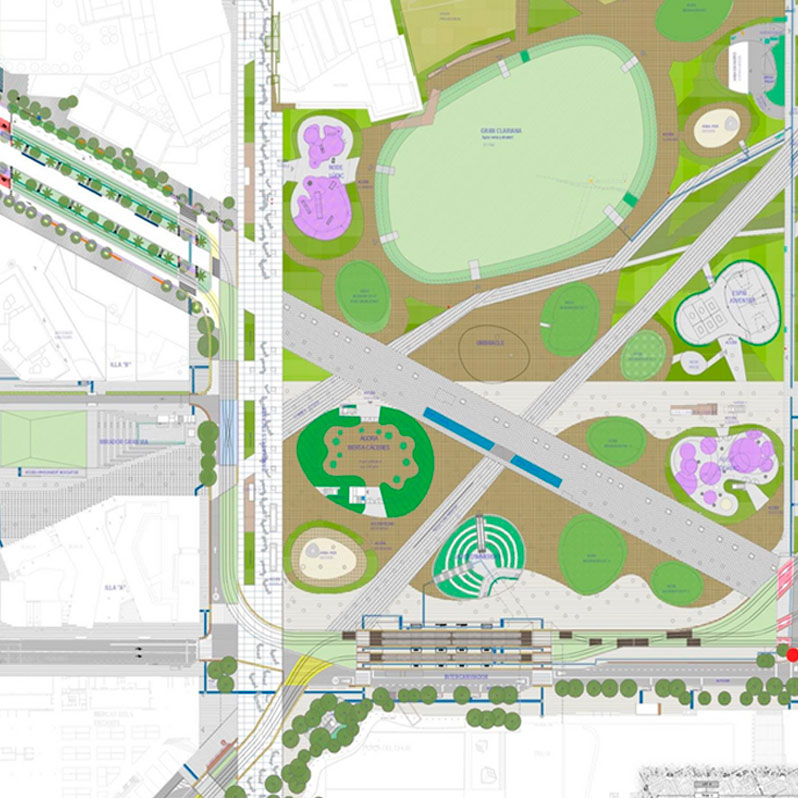
The Nudo de Glòries will be an important interchange, located in front of the Design Hub, which will connect with the metro and urban and intercity buses. Here, the trams will switch from the overhead catenary system to the APS (Ground Feeding) system.
The Nudo de Glòries will be an important interchange, located in front of the Design Hub, which will connect with the metro and urban and intercity buses. Here, the trams will switch from the overhead catenary system to the APS (Ground Feeding) system.
SOCOTEC es líder en dirección de Obra para Infraestructuras
SOCOTEC lidera la dirección de obra en UTE, aportando jefes de tramo, técnicos de sistemas, delineantes y soporte técnico. Además, realizamos trabajos de laboratorio y control de calidad, incluyendo la supervisión de soldaduras entre muchas otras actuaciones.
Durante el verano, se coordinó el corte del servicio de tranvía en Glòries para las obras del intercambiador, y se llevó a cabo una marcha en blanco para probar el nuevo sistema, demostrando la alta calidad del trabajo realizado.
Con esta obra, SOCOTEC refuerza su compromiso con la mejora de la movilidad urbana y la implementación de soluciones innovadoras en Barcelona, siguiendo su trayectoria en proyectos de alta envergadura como la ampliación de líneas de metro y actuaciones en Rodalies de Catalunya.




